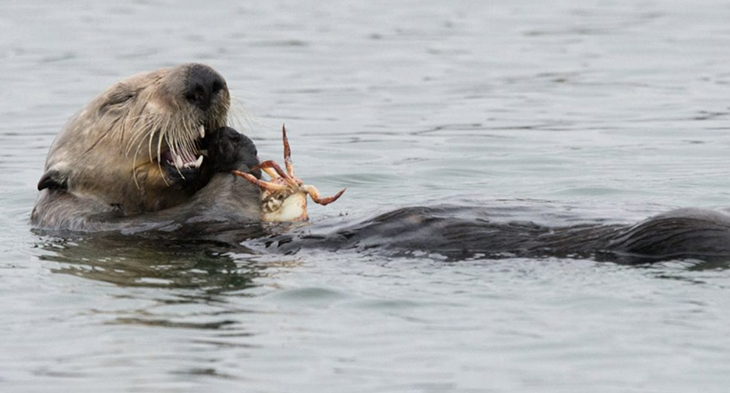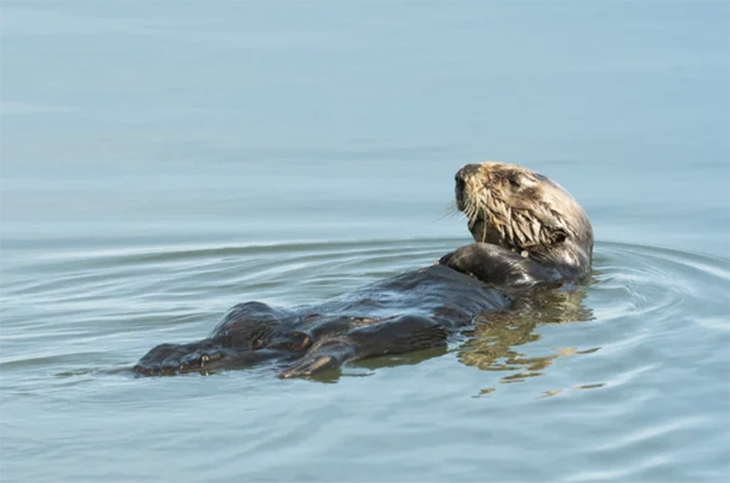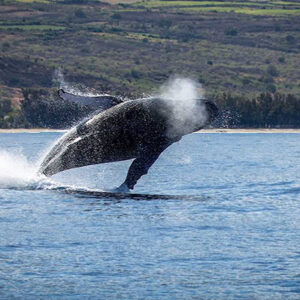
Amidst the challenges faced by California’s coastal ecosystems, a remarkable resurgence is underway, driven by the voracious appetite of sea otters for crabs.
A recent groundbreaking study, published in Nature, has unveiled the pivotal role played by sea otters in mitigating erosion in a Central California estuary, marking a significant step towards ecosystem recovery.
In the tranquil waters of Elkhorn Slough in Monterey County, the return of these charismatic marine mammals has ignited a beacon of hope for coastal ecosystems. The study reveals a staggering reduction of up to 90% in the erosion of marsh banks since the reintroduction of sea otters – a testament to the profound impact of top predators on ecosystem dynamics.
One of the study’s authors and director of the Center for Coastal Solutions at the University of Florida, Christine Angelini, Ph.D., said, “Restoring the otter population was achievable without significant effort, and as a result, we are now unlocking several decades of benefits from that one act of conservation.”
Despite the looming threats of rising sea levels, intensified fertilizer run-off, and stronger tidal currents, the resurgence of sea otters has defied expectations. Their insatiable appetite for marsh crabs, a staple in their diet, has emerged as a potent force in stabilizing the fragile coastal environment.
Senior author and marine conservation biology professor Brian Silliman, Ph.D. at Duke University said, “It would cost tens of millions of dollars for humans to rebuild these creek banks and restore these marshes. The sea otters are stabilizing them for free, in exchange for an all-you-can-eat crab feast.”
This revelation has far-reaching implications, prompting scientists to contemplate the potential of reintroducing top predators in ecosystems worldwide. The case of Elkhorn Slough serves as a poignant reminder of the intricate balance within natural systems and the transformative power of ecological restoration efforts.

As per the study’s lead author, Brent Hughes, Ph.D., associate professor of biology at Sonoma State University, reintroducing sea otters allowed these ecosystems to restabilize, despite all the other pressures they are subject to “That suggests this could be a very effective and affordable new tool for our conservation toolkit.”
Historically, Elkhorn was a bustling foraging ground for sea otters. These creatures necessitate consuming approximately 25% of their body weight daily – amounting to 20 to 25 pounds of food – with crabs ranking among their preferred delicacies.
However, the relentless pursuit of fur traders nearly drove them to extinction. In the absence of their primary predator, the crab population burgeoned, wreaking havoc on salt marshes by consuming roots and destabilizing the delicate ecosystem.
Years after the successful recolonization of otters, aerial surveys have confirmed a remarkable transformation in the landscape. Marshes and creek banks, once teetering on the brink of collapse, has exhibited newfound resilience in the face of mounting environmental pressures. Some marshes have even witnessed expansion – a tangible testament to the positive ripple effects of predator-prey interactions.
Dr. Fiorenza Micheli, lead author of the study, highlights the significance of this ecological triumph. The findings not only underscore the critical role of top predators in ecosystem management but also offer a glimmer of hope for other vulnerable coastal regions grappling with similar challenges.
Furthermore, Dr. Micheli’s colleague, Dr. Jennifer Angelini, highlights the potential applicability of this approach in addressing threats faced by Florida’s coastlines. With sea levels rising, intensified storms, and nutrient pollution posing imminent risks, the success story of Elkhorn Slough serves as a beacon of inspiration for coastal conservation efforts worldwide.
“All these challenges can feel unsurmountable. This study indicates to us that, if we truly understand the ecosystem and know what levers to pull, we can see significant benefits to the health and stability of these systems,” Angelini said.
Over a span of six years, the research team undertook extensive surveys across 13 tidal creeks and conducted small-scale field experiments at five locations within the estuary. In certain tests sites, otters were deliberately kept out, while in others, they were permitted to recolonize using a caging system devised by Dr. Angelini.
“As a graduate student in biology at UF, I had been setting up these types of cages and manipulating access to predators and their prey in salt marshes all over the Southeastern U.S. I’ll never forget building all the cages in the parking lot of the estuary out in California. And all these years later, we now see these amazing results,” Angelini explained.
“It’s an uplifting story about the benefits of conservation and persistent, long-term research.”
See more about these incredible creatures in the video below:
What are your thoughts? Please comment below and share this news!
True Activist / Report a typo


